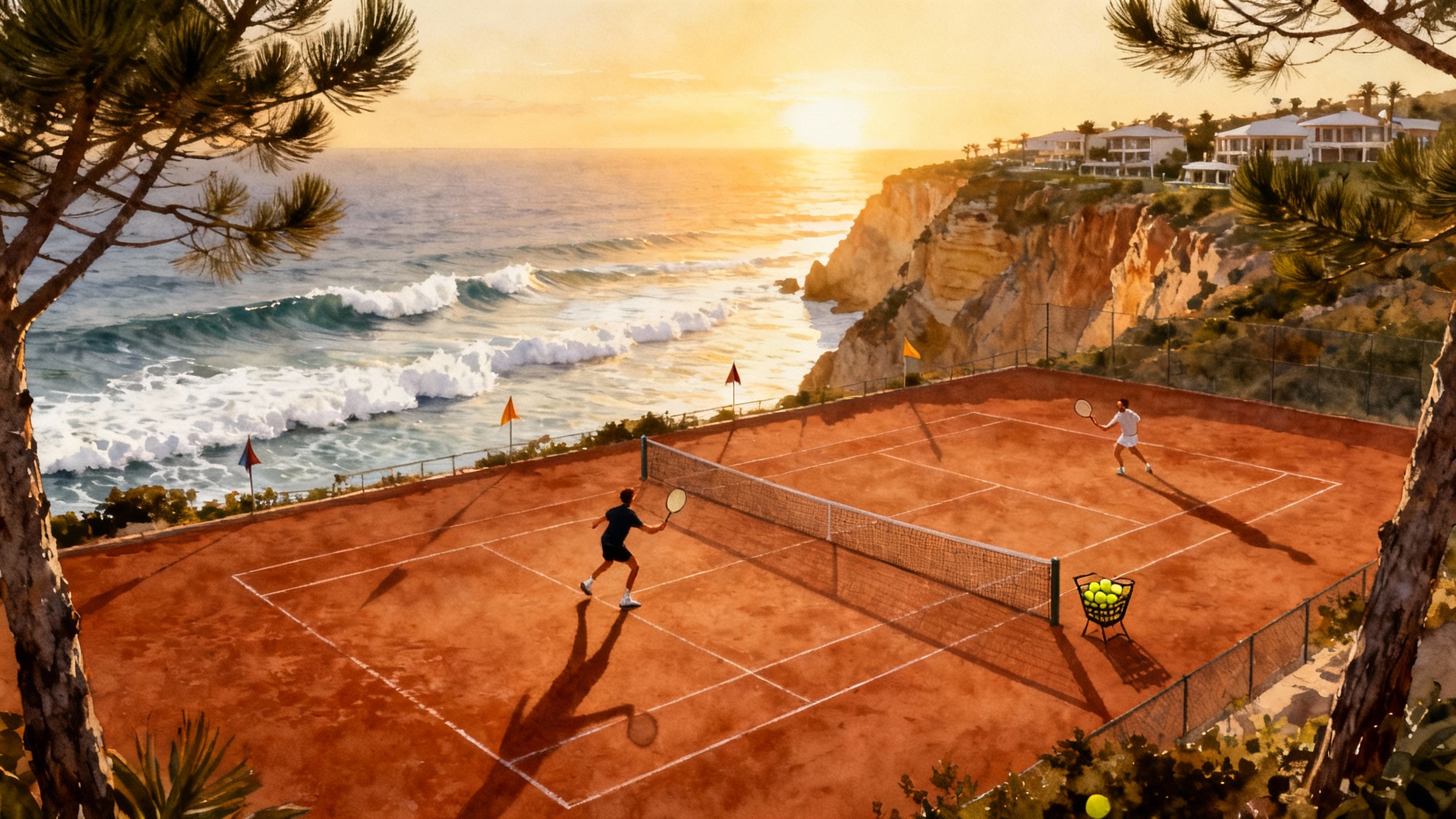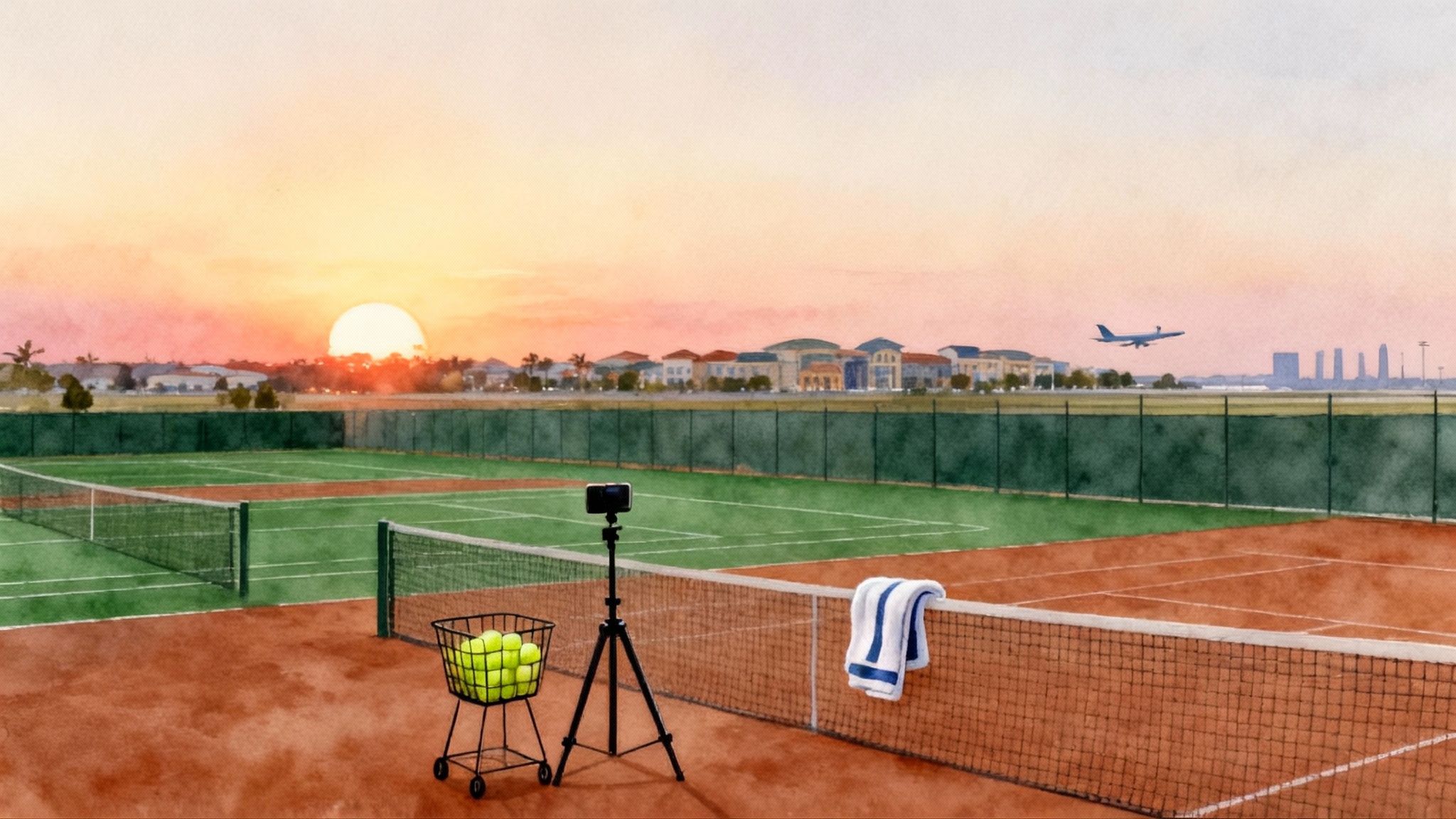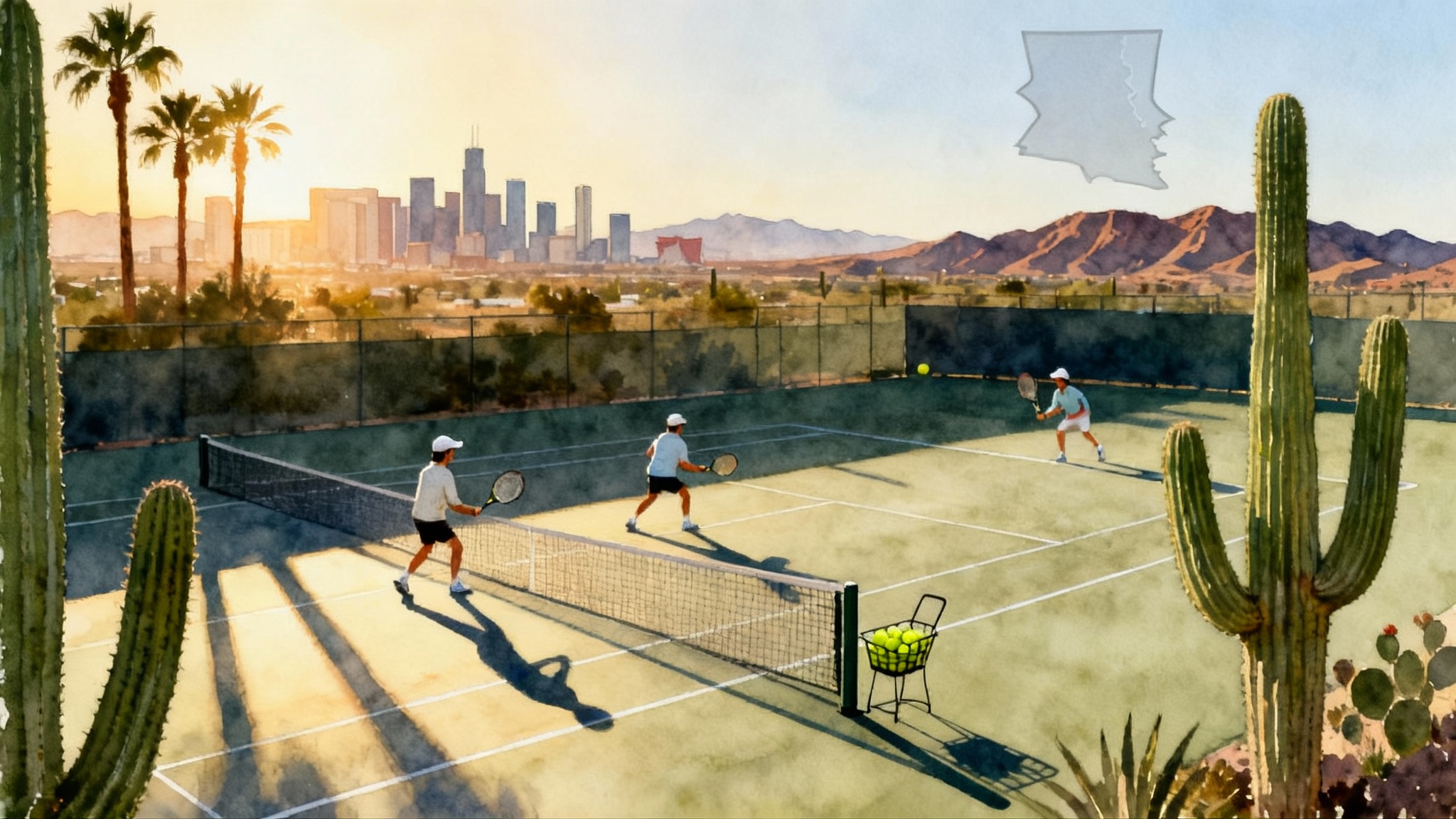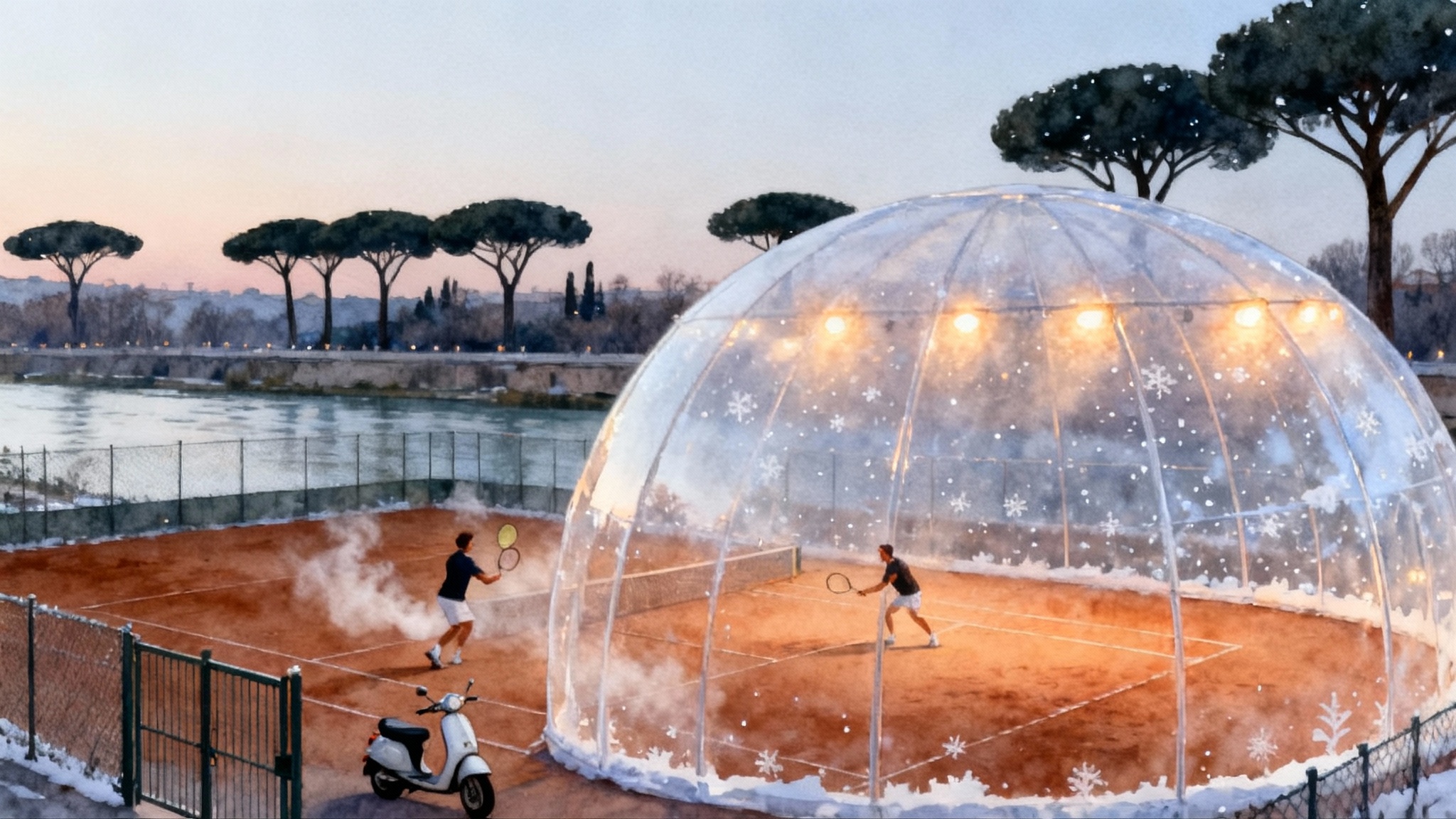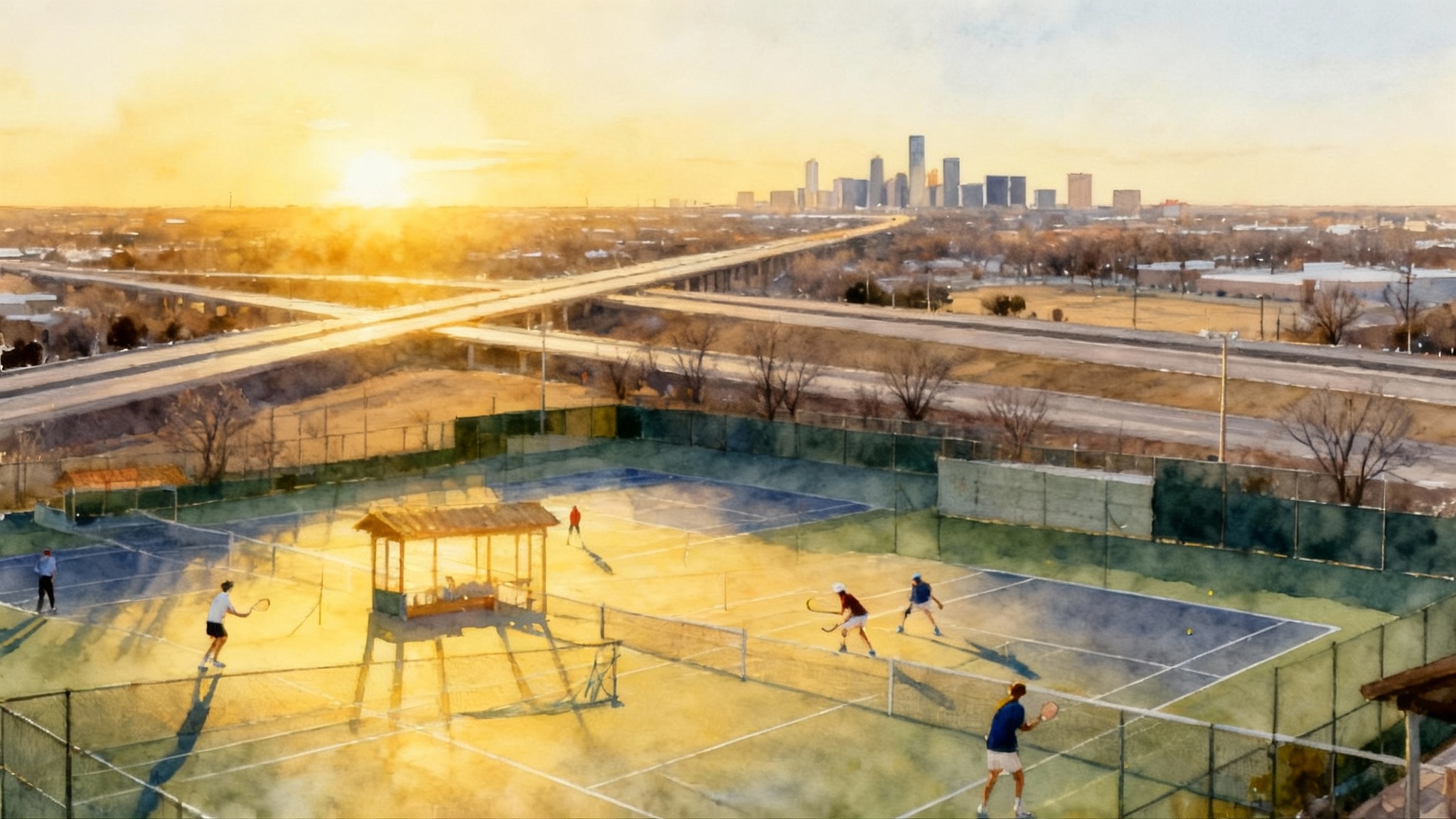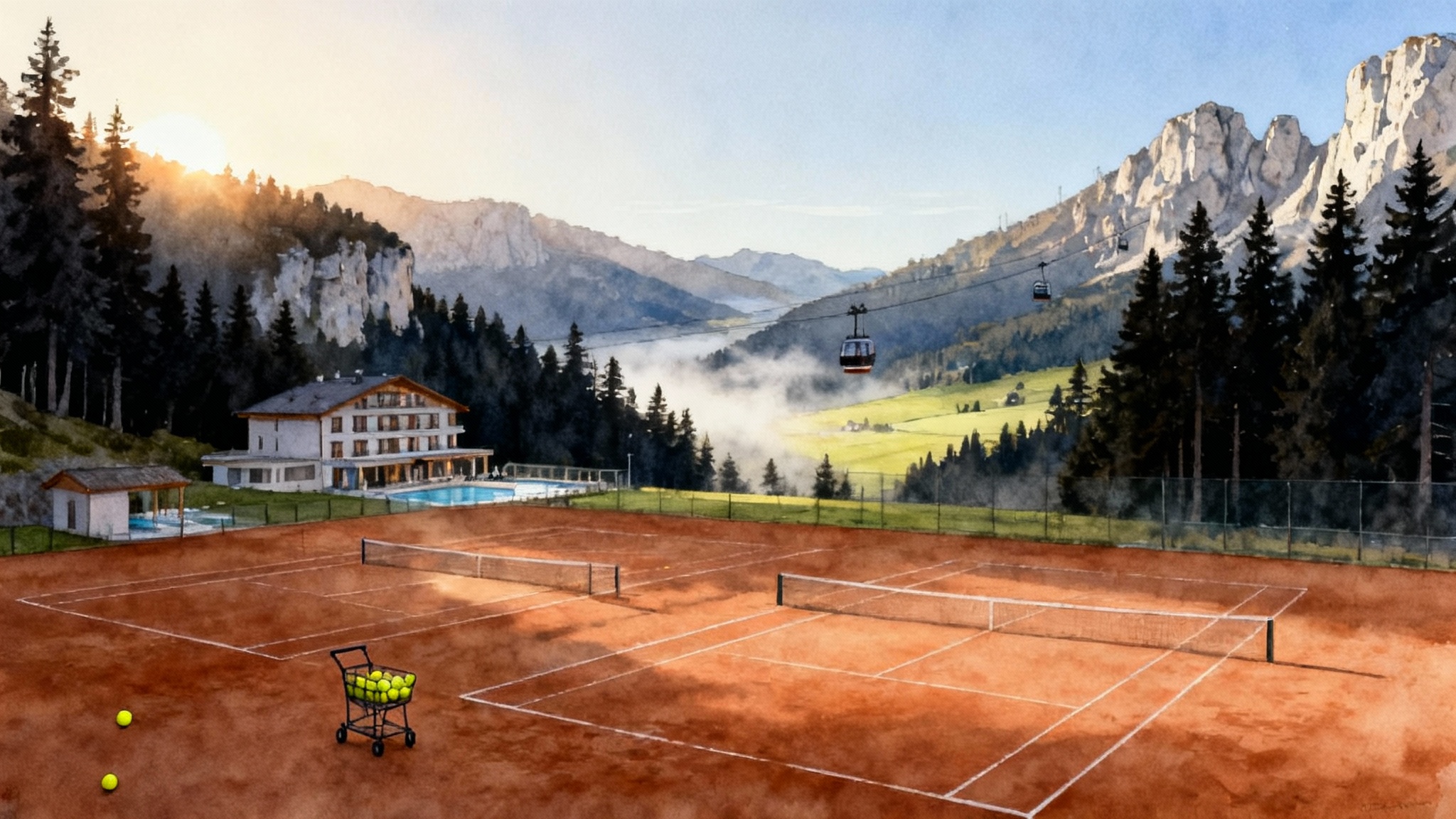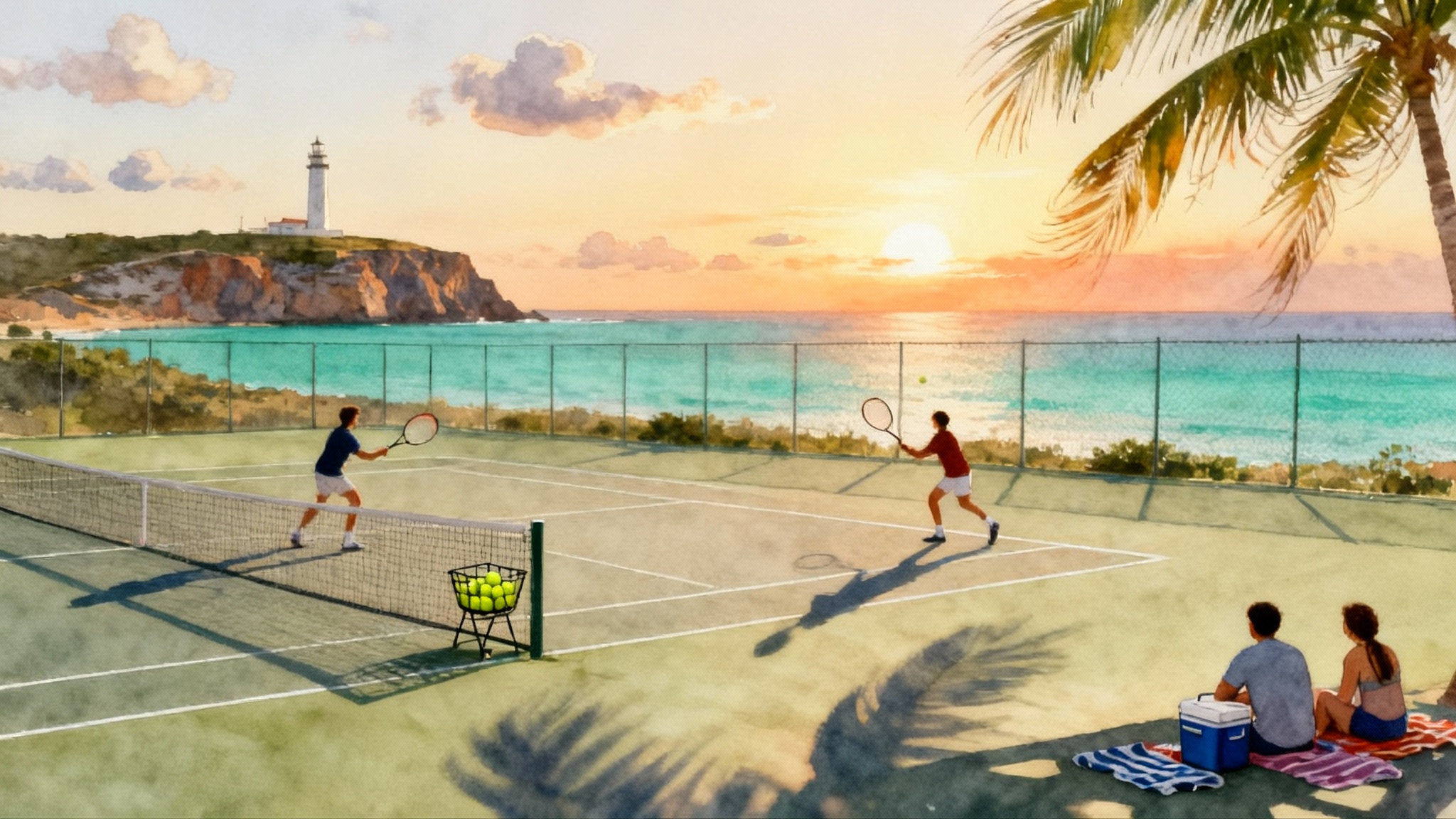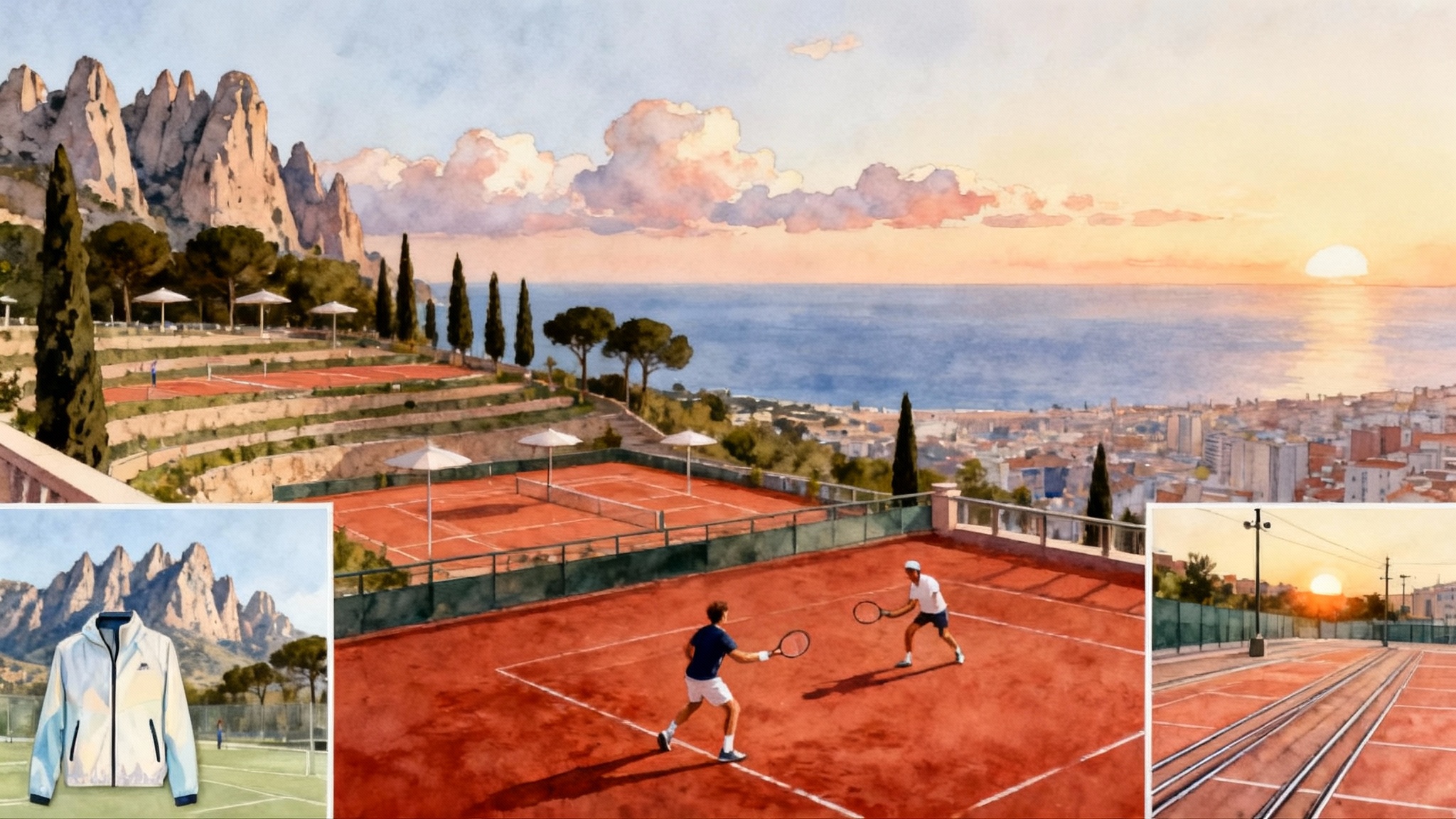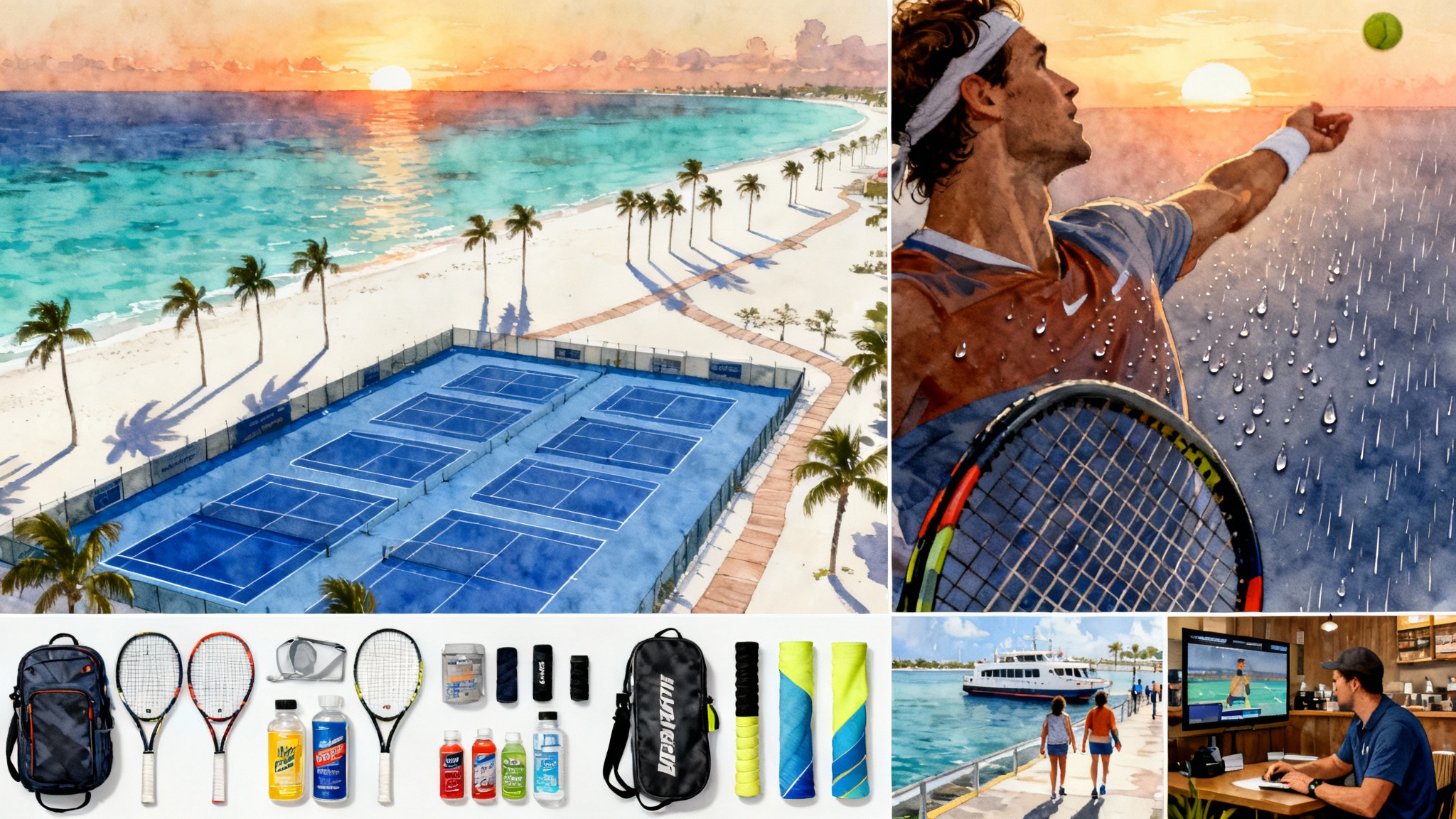Valencia Tennis 2025–26: Climate‑Smart Clay and City Bases
Plan a 1–3 week training block around Valencia City, Bétera, and Silla. Learn the best months and session times, clay vs GreenSet choices, car‑free bases, budgets, UTR match play, rain‑day options, and academy plug‑ins.
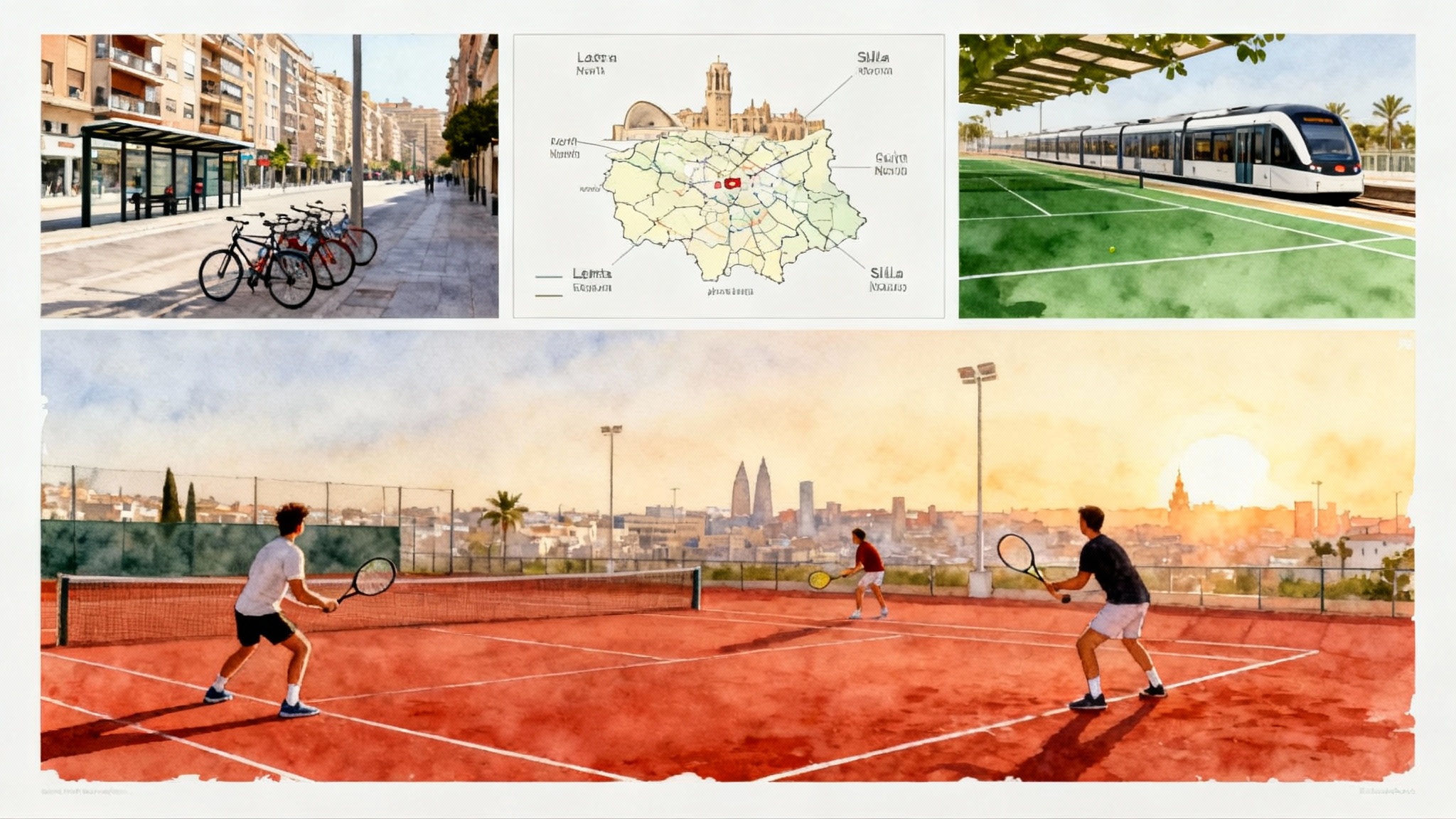
Why Valencia belongs on your year-round clay map
Valencia sits on Spain’s sunny east coast, with a Mediterranean climate that keeps clay playable in every season. Winters are mild, springs are long, and sea breezes temper shoulder-season heat. Summer can feel heavy at midday, but mornings and late afternoons stay workable if you hydrate well and plan breaks. Autumn delivers spectacular light and comfortable temperatures, although occasional storm bursts roll through. The net result is simple: if you want a reliable European base to build a block on clay, Valencia gives you twelve months of options without the travel costs of island hubs. If you are weighing Spain’s coast, compare it to our Barcelona coast year-round clay guide.
From a tennis standpoint, the region mixes classic red clay with GreenSet hard courts across municipal centers and private clubs. That variety helps you periodize skill work: movement on clay, timing and first-strike patterns on GreenSet, and cross-surface match play to keep confidence portable. You can train inside the city without a car, then hop north to Bétera or south to Silla for squads and competition.
Car-free bases and how to move between hubs
You can set up in Valencia City and reach both satellite hubs on public transit:
- To Bétera: Metrovalencia Line 1 runs straight to Bétera from central stations. Plan about 35 to 45 minutes platform to platform depending on transfer timing. Check the current map and timetable via Metrovalencia Line 1 to Bétera.
- To Silla: Valencia’s Estació del Nord connects to Silla on the commuter rail. Trains run frequently, with typical ride times of 12 to 20 minutes depending on stops.
Where to stay without a car:
- Ruzafa: walkable food scene, quick bus and bike access, easy transfers to the metro network.
- El Carmen and La Seu: historic core, compact streets, plenty of short rides to training.
- Benimaclet: student-friendly, direct metro lines, good base for early starts.
If you prefer a quiet sleep and shorter morning commute to squads, choose a small hotel or apartment near Bétera station or in Silla center. Both towns are compact, with bakeries for pre-session carbs and simple restaurants for post-workout meals.
Clay vs GreenSet in Valencia, and how to choose each day
Think of clay and GreenSet as two settings on the same camera. Clay gives you more exposure time to see the ball and build patterns; GreenSet demands faster shutter speed and crisper shapes.
- Clay strengths: longer rallies, movement efficiency, point construction, topspin confidence, and a protective surface for joints during high-volume weeks.
- GreenSet strengths: serve and return accuracy, first-ball pace, aggressive court position, and decision speed under pressure.
How to mix them inside a 1 to 3 week block:
- Week 1 emphasis: 70 percent clay, 30 percent GreenSet. Prioritize movement, height, and depth on clay, then finish sessions with serve plus one patterns on GreenSet.
- Week 2 emphasis: 60 percent clay, 40 percent GreenSet. Add more return games and short-ball conversion on hard.
- Week 3 emphasis: dial toward your upcoming competition surface. If you are clay-based, stay 70 percent clay; if you play indoor or hard next, flip to a 50-50 split and sharpen transition footwork.
Best months and ideal session times
Valencia’s playable windows shift with the season. Use these guide rails when you book courts and squads.
- January to February: late mornings are gold. Train 10:00 to 12:00 for technical blocks and 15:30 to 17:30 for point play.
- March to June: spring stretches the day. Go 08:00 to 10:00, gym or video midday, then 17:30 to 19:30 for match play.
- July to August: heat and humidity peak midday. Book 07:30 to 09:30, then 19:30 to 21:00. Keep a chilled bottle and light towel; plan shade breaks every 20 minutes on clay.
- September to early November: the sweet spot. 08:30 to 10:30 skill work; 17:00 to 19:00 squads and sets. Watch the forecast in late October for passing storms.
- Late November to December: cool but friendly. 10:00 to 12:00 for rhythm, 15:00 to 17:00 for points.
Hydration and heat notes: take 500 to 700 milliliters per hour in warm conditions, include electrolytes on days with two sessions, and weigh yourself before and after long hits to estimate fluid replacement. Clay demands more sliding and longer rallies, so build your breaks into changeovers, not only at the end of sets.
Plugging into local academies and squads
Two names matter for visiting players who want structure and competition.
-
GTennis Academy squads in Bétera: a strong option for group squads on clay, add-on private lessons, sparring partners, and tournament logistics. Email ahead with level, recent match scores, and intended dates. Ask for a weekly plan that mixes morning technical group, afternoon points, and one private lesson every second day. Confirm whether they help with entries for regional events during your stay.
-
Lozano Altur Tennis Academy in Silla: known for high-level coaching trees and a blend of clay and hard training. Visiting players can often plug into daily squads, then book private blocks focused on specific problems such as return depth, backhand shape, or first-step speed. Confirm which site you will train at and surface availability on your dates.
What to send in your first email:
- Player bio: age, dominant hand, style, and recent level indicators such as Universal Tennis Rating, European Tennis Number, college line play, or national ranking.
- Video: 3 to 5 minutes of live points and serve games.
- Goal: one to two clear targets for the block, for example “first serve percentage to 60 percent under pressure” or “cross-court backhand height on clay.”
Expectations and etiquette:
- Arrive 15 minutes early, bring two towels and your own grips and hydration.
- For squads, coaches will pair you by level, not by age. This is good; take the stretch.
- Ask for written drills at the end of day one so you can repeat them solo.
UTR match play and tournament support
If you want verified results during your stay, look for UTR Sports Verified Match Play, Flex events, and one-day tournaments near Valencia. Create or update your profile and search for events around your dates via UTR match play near Valencia.
Spanish federation events also run throughout the year. Many require a player license and advance registration. Ask your academy contact to identify realistic draws for your level, handle paperwork if needed, and help with on-site coaching permissions. A typical pattern is one or two verified match sessions midweek, then a sanctioned event across the weekend.
Rain-day and heat contingencies
Valencia gives you options when weather intrudes.
- Covered courts: several clubs maintain covered clay or GreenSet. Bookable slots go fast on wet days, so request a standby list as soon as you see rain in the forecast.
- Technical indoor sessions: if courts are soaked, use the gym or studio to rehearse patterns. Build shadow-swing ladders, medicine ball throws for rotation, and reaction drills with colored cones. Finish with serve motion progressions using a towel to keep tempo.
- Film and review: bring match clips and do a targeted video session with your coach. Set specific cues to test once the courts reopen.
- Heat plan: in peak summer, swap the midday hit for pool recovery, elastic band circuits, and 30 minutes of serves at sunset when courts cool.
Budget planning, with real numbers
Costs vary by surface, membership rules, and the week you visit. These are representative ranges in euro. Dollar equivalents shift with exchange rates, so convert on the day you book.
- Court hire, clay: 12 to 28 euros per hour for visitors, higher at peak times.
- Court hire, GreenSet: 10 to 24 euros per hour.
- Group squad, 90 to 120 minutes: 25 to 55 euros per player depending on level and ratio.
- Private lesson with staff coach: 45 to 90 euros per hour. Senior or head coaches will be higher.
- Hitting partner: 25 to 45 euros per hour.
- Stringing: 12 to 22 euros labor, plus string if you do not bring your own.
- Transport: metro or commuter rail 1.5 to 5 euros per trip, multi-day travel cards reduce this.
- Accommodation: city apartments 65 to 140 euros per night in shoulder season, 90 to 200 euros in high season; Bétera and Silla often 15 to 30 percent lower.
- Food: 8 to 12 euros for a lunch menu, 15 to 30 euros for a solid dinner without wine.
Sample weekly totals per player, two sessions per day, two private lessons in the week:
- Lean training week, shared courts and squads: 420 to 700 euros for courts and coaching.
- Full service week, more privates and match support: 750 to 1,250 euros.
Build your 1-week block
This plan targets an intermediate to advanced player who wants to sharpen clay movement and match toughness while keeping variety through GreenSet.
- Day 1, Valencia City: morning 08:30 clay fundamentals, height and depth, 90 minutes. Afternoon 17:30 GreenSet serve plus one, 60 minutes, then 30 minutes return games. Short walk through the old town after dinner to keep legs loose.
- Day 2, Bétera: 08:00 GTennis group squad, 120 minutes, clay. Afternoon gym and video, then 30 minutes of serves at sunset. Early to bed.
- Day 3, Valencia City: 09:00 private lesson, 60 minutes, backhand patterns on clay. Afternoon 18:00 sets to four on GreenSet, no-ad scoring, focus on first-ball discipline.
- Day 4, Silla: 09:00 commuter rail, match play set up with local partners, two timed practice sets on clay. Afternoon recovery swim and a light museum walk at the City of Arts and Sciences.
- Day 5, Bétera: 08:00 group drilling, 90 minutes, clay. Afternoon 17:30 GreenSet return depth ladders, then tiebreak sets.
- Day 6, Valencia City: verified match session if available, or internal ladder. Two hours total including a timed warmup and match charting. Evening paella in Ruzafa.
- Day 7, Valencia City: 10:00 light hit, 60 minutes, then a long bike ride through Turia Park. Pack and review notes with coach.
Session timing shifts 60 to 90 minutes earlier in July and August, and nudges later in January and February.
Build your 2-week block
Week 1 consolidates movement and patterns; Week 2 introduces more verified match play and tournament exposure.
Week 1 structure:
- Monday: clay mechanics block, 2 hours. Emphasize split timing and outside-leg load. Afternoon GreenSet serves, 45 minutes, then 30 minutes of approach plus first volley.
- Tuesday: squad, 120 minutes clay in Bétera. Afternoon gym, posterior chain and lateral power, 45 minutes.
- Wednesday: private lesson, 60 minutes technical on defensive forehand and height. Afternoon verified match session or internal ladder, 90 minutes.
- Thursday: recovery morning, pool and mobility. Evening 90 minutes on GreenSet, return plus two, then tiebreakers.
- Friday: clay patterns, 90 minutes, then 45 minutes on transition footwork up the line. Afternoon video review.
- Saturday: match play day, full scoring on clay, two hours. Evening beach walk and stretch.
- Sunday: optional 60 minutes light hit, day trip to Albufera for rice and sunset.
Week 2 structure:
- Monday: serve and return audit on GreenSet, 90 minutes. Afternoon 60 minutes clay finishing drills.
- Tuesday: squad in Bétera, 120 minutes clay, with tracked volume of high-intensity points. Afternoon nap and nutrition focus.
- Wednesday: tournament or verified match block, two hours including warmup. Ask for statistical charting on first four shots.
- Thursday: recovery morning, then 75 minutes of patterns you lost in matches. End with 20 minutes of second serve targets.
- Friday: Silla clay session, 90 minutes, simulate windy conditions by aiming crosscourt to higher windows. Afternoon 20 minutes of serves and 20 minutes of returns.
- Saturday: competition day, best available draw. If rained out, move to covered courts or run a two-hour indoor technical circuit.
- Sunday: debrief, retest serve percentage, and document the next four weeks of cues to take home.
What to pack and how to prep
- Shoes: one pair dedicated to clay, one for GreenSet. Rotate daily to manage sweat and outsole wear.
- Grips and strings: bring at least 12 overgrips and two reels or sets of your preferred string. Valencia stringers are quick, but you will save time by having spares.
- Hydration: reusable 1 liter bottle, electrolyte tabs, and a small cooler bag for summer.
- Sun plan: cap, zinc stick, and a lightweight long sleeve for July and August afternoons.
- Data: a simple point chart on paper or a phone template to track serve percentage, return depth, and unforced errors by wing.
How to book and keep control of your block
- Reserve courts and squads before your flights, especially in spring and September. Confirm surface and time of day, not just location.
- Ask academies for a written weekly plan that includes one measurable technical goal per day. For example, “10 successful cross-court forehand windows over the sideline cone” is measurable; “hit heavier” is not.
- For match play, lock in at least two verified sessions in Week 2. If UTR is not available on your dates, arrange internal ladders with charting so you still capture data.
- Use a simple traffic light review each evening. Green means keep as is, yellow means adjust the drill or constraint, red means replace it tomorrow.
A quick internal directory
If you prefer to centralize communication and keep a paper trail, start with one academy contact and ask for a sample weekly plan that includes squads, privates, and verified match play.
Final thought
Training blocks succeed when climate and logistics get out of your way. Valencia gives you that runway: reliable clay, a city you can cross without a car, and nearby hubs that add variety and competition. Set your calendar to the season, choose clay or GreenSet with intent, lock in squads and verified matches, and leave with a notebook full of cues you can trust when you line up to serve on your next big day.
